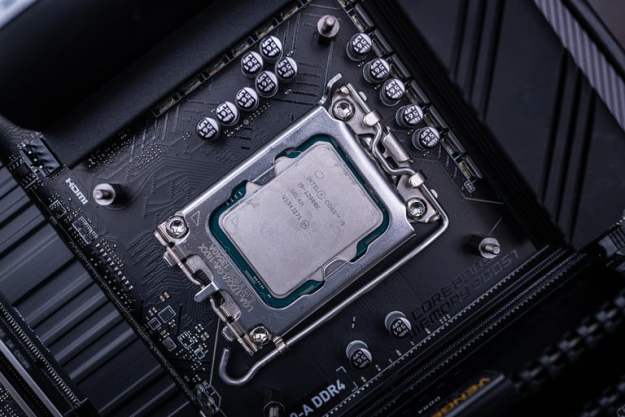The summer is here, and that means Intel is gearing up to release high-end desktop processors for the mainstream market. These chips will essentially fall under Intel’s fourth wave of eighth-generation processors to be released during the third quarter of 2018. At the forefront of this desktop assault will supposedly be an eight-core chip currently listed as the Core i9-9900K.
This upcoming eight-core desktop CPU will be Intel’s second Core i9-branded processor released to the mainstream market, following the Core i9-8950HK six-core chip released for high-end laptops in April. Prior to these two processors, Intel released four seventh-generation super-high-end Core i9 processors in the third quarter of 2017 packing between 10 and 16 cores for PC gamers and enthusiasts.
But here we see Intel pushing an eight-core chip into the mainstream market. When Intel launched its eighth-generation desktop processors in October 2017, the company boasted about how it brought a six-core chip to the mainstream market while AMD already topped that count with its eight-core Ryzen chips months prior. Intel now appears to be catching up with its upcoming Core i9-9900K desktop CPU.
Here are the rumored processors in Intel’s next eighth-generation wave. Note that there currently is no Core i3 part listed with these CPUs, but Intel may stagger its launch similar to what it did with the Core i3-8130U for laptops in February:
- Core i9-9900K — 8 cores — 16 threads
- Core i7-9700K — 6 cores — 12 threads
- Core i5-9600K — 6 cores — 6 threads
Joining this trio will be the Z390 chipset for motherboards. Previous rumors indicated that the Z390 would be a rebranding of the Z370, but the latest information tagging along with the Core i9-9900K indicates otherwise. The Z390 chipset will be based on the current Z370 but supposedly add a few additional features such as Intel Wireless AC and Bluetooth 5.0 connectivity, support for up to six USB 3.1 Gen2 ports (10Gbps), and more. Other features include support for up to 10 USB 3.1 Gen1 ports (5Gbps), support for up to 24 PCI Express 3.0 lanes, support for six SATA 3 ports, and so on.
Intel’s first wave of eighth-generation processors was actually based on a tweaked seventh-generation design. These four processors targeted ultra-thin laptops in August 2017 while Intel waited to release its true eighth-generation processor design in six desktop CPUs in late September 2017. Intel’s third wave focused on high-performance laptops in April and introduced the company’s first Core i9 product to the mainstream laptop audience. Now Intel is focusing on the mainstream desktop once more and will likely follow that fourth wave with super high-end X-Series chips for PC gamers and enthusiasts before the end of 2018.
Meanwhile, AMD tweaked its Zen processor core design and released a second-generation batch of desktop processors in April. There are four in total: Two Ryzen 7 chips with eight cores and 16 threads, and two Ryzen 5 chips with six cores and 12 threads. AMD’s super high-end Ryzen Threadripper desktop processors for enthusiasts and PC gamers are expected to launch in the third quarter of 2018 packing up to 32 cores, if not more.
Editors' Recommendations
- Gamers are reportedly returning Intel Core i9 CPUs in droves
- Intel’s Core Ultra CPUs are more Apple, less AMD
- Intel’s next budget CPUs may finally be worth buying for gamers
- AMD Ryzen 9 7950X3D vs. Intel Core i9-13900K: only one choice for PC gamers
- Intel’s Core i9-13900KS hits 6GHz out of the box, but there’s a catch


